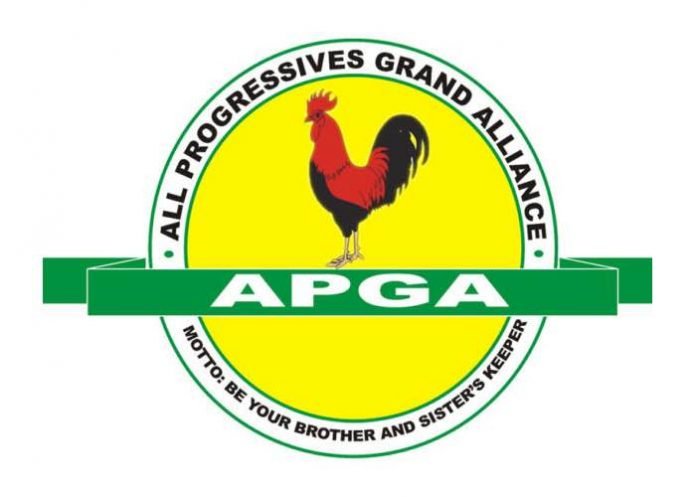A notable contributor to the modest impact of Nigerian governments in the provision of social infrastructure would be the failure of some actors to recognise that government is a continuum. By the very force of the social contract, administrations though transient, have the obligation to add value to worthwhile ventures they inherit on assuming office even if they had not promised such services in their campaign manifesto.
In Nigeria, structures and projects may not be discarded merely for being considered white elephants. The fate of uncompleted project[s] started by a previous government is often determined by three factors. These relate to whether the leadership of a successor government has the long distance race disposition; seeks financial benefit from the contract; and is concerned about who takes the credit for the project. A leadership that is positive on the first count and disinterested in the other two would be salutary; but as we know, great leadership is still a scarce product here.
Such ventures that require huge capital outlay and long gestation period have to do with the long distance factor in leadership. Some leaders of government do not have the patience to follow through the incremental steps of multi stage projects. Given to the dash of one – stop tasks, they find the processes of long haul projects, slow and tedious. And the tendency is to circumvent those tasks we find daunting. This is probably true of the Ajaokuta Steel complex which has dragged on for forty years. The intricate process of its execution has not endeared it to most regimes. Added to this is the financial demand of the steel plant. The cost implication of the project which has continued to rise with the weakening of the naira and inflationary pressures has tended to discourage continuation of the scheme.
This was also true of the Anambra airport plan initiated in 1986 by the military regime of Group Captain Emeka Omeruah, easily Anambra State’s best military administrator. In response to the widespread demand for an airport in the south of the old Anambra State, Omeruah launched an airport fund drive, which proceeds were used in settling consultancy fees and clearing of the initial site at Oba, near Onitsha. Following Omeruah’s reposting, no other military or civilian governor before Willie Obiano displayed enthusiasm to actualize the project. While the teething problems faced by Chukwuemeka Ezeife, first elected Governor of the new Anambra State and the political turbulence that defined the Chinwoke Mbadinuju and Chris Ngige regimes might have tied their arms on the airport venture, the inaction of the Peter Obi administration, outside the choice of the present Umueri site, is hard to understand.
Obi had not only the fortune of eight year reign but also the record of bequeathing his successor N9b cash; N35b investment and N106b debt. However, the same ability to save triggers a reluctance to commit to capital intensive projects. Ploughing money into a long duration project that the airport definitely is would seem like losing such funds. And so, Obi would not touch the airport venture.
Obiano saw things differently. Ordinarily, the airport plan had economic potentials with the proximity to the Onitsha – Nnewi commercial, industrial axis. With the added value of Orient Petroleum located at Umueri, the huge economic benefit accruable from an aerodrome venture is all too clear. It was with this understanding that Governor Willie Obiano expanded the facility to a cargo airport city. With the initial [Chinese] contractor financed arrangement no longer operating, Obiano has voted N6b for the project in the 2020 budget.
The present regime does not have to complete the works. What is fundamental is that this is a project that Anambra State cannot but take up. If the Peter Obi administration had invested half of the N9b it handed over to the Obiano government on the airport project, the take – off would have saved the State some of the current cost. If it were to cost N2b to construct the runway in 2012, the bill for it today would be about N4b. There is a lesson from Imo State airport named after second republic Governor Sam Mbakwe for his pioneering role which was completed fifteen years ago because succeeding administrations continued to contribute to its execution.
Obiano had given early indication of his resolve to ply the continuity route with the retention of about thirty percent of appointees from his predecessor’s government in 2014. That composition has hardly altered to date. But perhaps the bang is to be seen in the continued execution of inherited ongoing projects and services across many sectors. Notable among such schemes now completed are the Onitsha Shopping Mall; Agulu Lake Resort, school buildings, health centres and scores of roads. The Chukwuemeka Odumegwu Ojukwu Teaching Hospital, Awka, continues to be expanded and equipped to international standard; with a pace – setting oxygen plant unveiled in August 2019.
In electing to drive this continuity policy, Obiano had consciously decided to put the larger interest of the people and society first. Thus, like the post Mbakwe administrators on the Imo State airport, he was not influenced by considerations of who would take the popularity and credit for the projects.
Incidences of arbitrary project discontinuation lead to loss of investor confidence. Here, we see part of the secret behind Obiano’s success in attracting investment to the state. And when contracts are unnecessarily terminated or disrupted, there are unpleasant consequences. Inconsistencies and delays on the part of our governments in public works execution are maximally exploited by contractors and other vested interests to achieve upward contract review.
In the final analysis, the continuity model is a win – win for everyone. The system is strengthened, the society reaps the dividend, the project initiator and successor – facilitator[s] are acknowledged. To paraphrase an anonymous author, by looking beyond the next election to the next generation, Obiano has demonstrated the stuff of a statesman.







